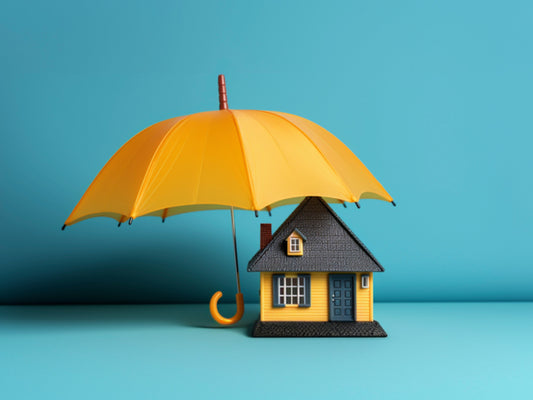
Disaster Insight: Insurance Coverage Gaps with Wildfires
Wildfires can cause devastating damage, leaving homeowners to navigate the challenging and often confusing process of filing insurance claims. Unfortunately, many homeowners discover significant gaps in their coverage only after a wildfire strikes. Understanding these potential gaps and how to address them can make a crucial difference in ensuring you're adequately protected. This guide examines common insurance coverage issues faced by homeowners and provides tips to help you close these gaps.
Wildfires can cause devastating damage, leaving homeowners to navigate the challenging and often confusing process of filing insurance claims. Unfortunately, many homeowners discover significant gaps in their coverage only after a wildfire strikes. Understanding these potential gaps and how to address them can make a crucial difference in ensuring you're adequately protected. This guide examines common insurance coverage issues faced by homeowners and provides tips to help you close these gaps.
Understanding Your Policy Coverage
Dwelling Coverage
-
Description: This covers the cost to rebuild or repair your home if it's damaged or destroyed by a wildfire.
-
Risks of Underinsurance/Underpayment: Adjusters may provide low rebuild estimates that don't reflect the true cost of construction, often quoting far below the coverage limit. After a wildfire, rebuild costs typically increase due to higher demand for materials and labor, which can further exacerbate the gap between actual costs and your insurance payout.
Personal Property Coverage
-
Description: This covers the replacement of your personal belongings damaged or destroyed by a wildfire.
-
Risks of Underinsurance/Underpayment: Creating a detailed inventory list after a disaster can be overwhelming and emotionally taxing. Special limits on certain items, such as jewelry, electronics, and collectibles, can lead to significant underpayment if these items are not accurately documented or if their value exceeds the policy limits.
Other Structures
-
Description: This covers structures on your property that are not attached to your main house, such as sheds, fences, and detached garages.
-
Risks of Underinsurance/Underpayment: Coverage for these structures is typically a percentage of your dwelling coverage, which may be insufficient. Additionally, insurance companies often underpay claims related to these structures, leaving homeowners to cover the shortfall out of pocket.
Additional Living Expenses (ALE)
-
Description: This covers the cost of living elsewhere while your home is being rebuilt or repaired, including hotel stays, restaurant meals, and other living expenses.
-
Risks of Underinsurance/Underpayment: In cases of total loss, displacement periods can be long, sometimes stretching into years. While the initial ALE coverage amount may seem high, it can deplete quickly, potentially leaving you without funds to cover continued housing expenses.
Common Coverage Gaps Exposed by Wildfires
Underinsurance
-
Replacement Cost vs. Actual Cash Value: Replacement cost policies cover the cost to replace damaged property with new items of similar quality, while actual cash value policies take depreciation into account, often resulting in lower payouts. Understanding which type of coverage you have is crucial.
-
Inflation and Rising Construction Costs: Post-disaster inflation and increased demand for construction services can drive up rebuild costs, making it essential to ensure your policy limits are adequate.
Exclusions and Limitations
-
Smoke Damage Exclusions: Some policies may exclude or limit coverage for smoke damage, leaving you to cover the repairs.
-
Landscaping and Trees: Many policies have limited or no coverage for landscaping, trees, and other outdoor property, which can be costly to replace.
-
Secondary Homes and Vacation Properties: Coverage rules for secondary residences may differ, often providing less protection than your primary home.
Endorsements and Riders
-
Ordinance or Law Coverage: This covers the cost to bring your home up to current building codes during a rebuild, which can be significantly higher than simply restoring it to its previous state.
-
Extended Replacement Cost Endorsement: This provides additional coverage above your policy limit, offering a safety net if rebuild costs exceed expectations.
Assessing and Closing Coverage Gaps
Regular Policy Reviews
-
Annual Checkups: Regularly review your insurance policy to ensure it keeps pace with changes in your home's value and construction costs.
-
Consulting with Professionals: Work with insurance agents or brokers to evaluate your coverage and identify potential gaps.
Updating Your Coverage
-
Accurate Home Valuation: Ensure your home’s insured value reflects the current replacement cost, not just the market value.
-
Contents Inventory: Maintain an up-to-date inventory of your personal belongings, including photos and receipts when possible.
Additional Coverage Options
-
Flood Insurance: Consider flood insurance, even if you're not in a designated flood zone, as wildfires can alter the landscape and increase flood risk.
-
Earthquake Insurance: Evaluate the need for earthquake insurance based on your geographical area.
-
Personal Umbrella Policy: An umbrella policy can provide additional liability coverage beyond the limits of your standard homeowners insurance.
Understanding and addressing these common coverage gaps is essential to protect yourself and your property adequately. We're here to help; if you have any other disaster or wildfire-related topics you'd like us to cover, don't hesitate to ask. If you have any questions or need further assistance with your insurance claim, feel free to create an account on Tugboat's platform. We’re here to help you every step of the way!
Disclaimer:
This blog is intended for informational purposes only and does not constitute legal or financial advice. Tugboat provides information and support, but we are not licensed public adjusters or attorneys. We do not negotiate or adjust claims on your behalf. All advice given is intended to empower you in managing your own claim, but it is ultimately your responsibility to pursue and handle the claim. Tugboat is not responsible for claim outcomes. Additionally, our tools are provided based on the information you provide, which may be incorrect or incomplete. Always consult a licensed professional for case-specific guidance.
Need expert guidance on a homeowner’s insurance claim? Tugboat Claims is here to help!



